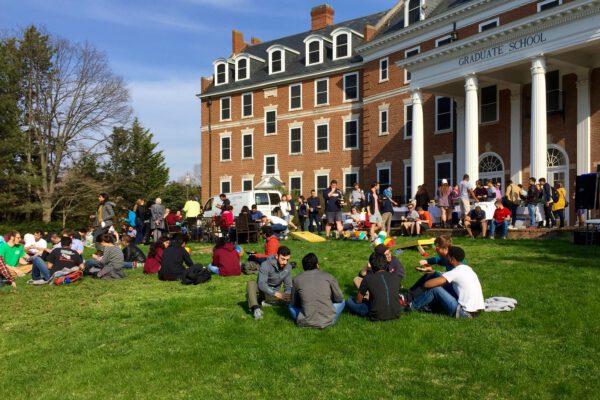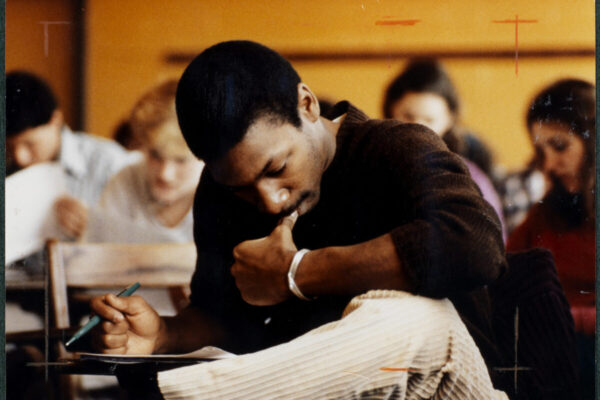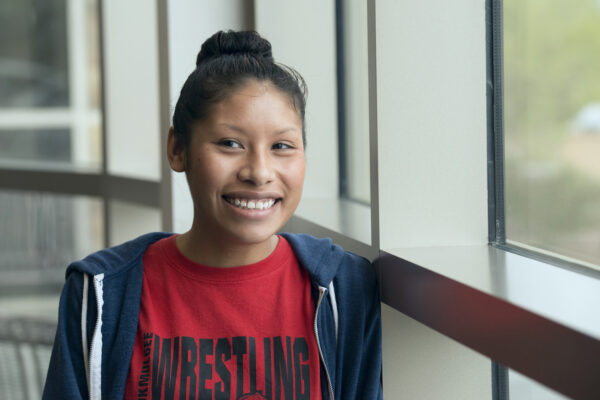By Vincent Carales, Wei-Lin Chen, Jermain Griffin & Sue-Yeon Song, graduate research associates in ACE’s Center for Policy Research and Strategy

A major challenge confronting U.S. colleges and universities today is the need to disentangle the complexities of diversity, social justice and free speech.
We have seen prominent examples of social activism over the past few years at colleges throughout the United States, and subsequent demands by students to make changes in campus culture to help end systemic racism. And in many ways, the problems that stem from a dearth of cross-cultural and cross-racial interactions seem to be getting worse: The Southern Poverty Law Center released a report in November that cited close to 900 separate hate and harassment incidents within the 10 days following the 2016 U.S. presidential election.
These events, along with growing concern about the effect of new immigration policies on students and faculty at U.S. institutions, suggest that now is a critical time for institutions to facilitate open discourse about race to promote diversity and inclusion on their campuses. Fostering these conversations is not only good for social cohesion, but it also allows students to better realize the educational benefits of diversity.
Some U.S. colleges and universities are working with an international organization to find ways to meet this need. Arnd Wächter, a German-born film producer and cross-cultural education specialist, has several years of experience conducting diversity and inclusion workshops in the United States. Through his experiences, Wächter observed that while some U.S. campuses enjoy a measure of demographic diversity, there seems to be very limited engagement among students of diverse backgrounds. This inspired him to start a nonprofit organization focused on promoting dialogue as a way to build more diversity and inclusion.
Crossing Borders in U.S. Higher Education
In 2003, Wächter founded Crossing Borders Education (CBE), a non-profit intercultural education organization that offers resources such as training modules and films to promote cross-cultural understanding. In December, 2016, the graduate research associates from ACE’s Center for Policy Research and Strategy had a chance to talk with Wächter via Skype about his organization and its work. Prior to the chat, we viewed his most recent film, American Textures, which he said was made in response to heightened interracial tensions in America.
The film captures the complexities involved in intercultural dialogue by chronicling the interactions of six young adult Americans of black, white and Latino origin on a road trip to cities and towns in several southern states. As these individuals get to know one another, they confront and acknowledge the negative effects of racism and how cultural misunderstandings have impacted their lives, both socially and emotionally. The process of dealing with conflict and talking through differences is what ultimately brings them closer together, showing that when people actually take the time to talk, they will be more understanding of those differences.
American Textures is part of an intercultural documentary trilogy designed to assist colleges and universities with facilitating intercultural dialogue by providing real-life examples of how diverse groups of strangers interact. The trilogy’s first film, Crossing Borders, brought together American and Moroccan college students in an education abroad exchange program in Morocco with the aim of deconstructing stereotypes through intercultural friendships. The second installment, The Dialogue, co-produced by Michigan State University, took place in China and focused on how American and Chinese college students developed intercultural and cross-communication skills. Wächter’s goal with American Textures is to illustrate how dialogue can be used to unlock racial, ethnic and socioeconomic tensions that might otherwise prevent the integration of perspectives among students, faculty and staff on U.S. campuses.
How Campuses Can Use Accompanying Resources
According to the CBE website, the trilogy of films is one among a host of resources that include travel programs and intercultural online tools, such as curricula and study abroad toolkits, that help users explore and understand the world from multiple perspectives. U.S. institutions have utilized these resources on their campuses for: 1) general education and first-year seminar courses; 2) orientations for faculty and students; 3) specific department programs such as international relations, ESL, and pre-service teacher trainings; 4) professional development programs; and 5) extra-curricular activities. Materials are flexible and can be built into various settings such as the classroom, peer-to peer interactions like student organization activities, and professional development programs for faculty and staff.
The following institutions are integrating the CBE resources into their diversity and intercultural programs:
- Faculty at Missouri State University used it in their student dialogues called ‘Tough Talks.’
- Webster University (MO) included the resources into their student development activities, including a Crossing Borders Education conference.
- The George Mason University (VA) School for Conflict Analysis and Research screened American Textures and and is currently creating curriculum designed around the film’s resources.
- During its celebration of ‘International Education Week,’ Muskegon Community College (MI) also screened the film.
To date, over 300 universities have used CBE films and tools. Wächter mentioned that screening the films are only a component of the project’s aim. The purpose of the whole process is to initiate frank dialogue and invite students to share their experiences in a safe but authentic environment.
“If the process is too safe and too structured, students feel that it is not real, and if it’s too real we might hurt each other unintentionally, so both realness and safety are needed,” he said. In essence, he believes that real dialogue begins with compassion and leads to deeper understanding.
Embracing Dialogue on Campus Community
Positive reactions at different institutions affirm that American Textures and other CBE resources are powerful—and effective. At Missouri State University, for example, an African American student opened up a conversation after the screening about the isolation she experienced on campus. She shared that the film’s screening was the first time she spoke publicly about feeling marginalized on campus, which gave her confidence to speak up in the future.
“Emotion, balance and safety together with good intentions and facilitation can create powerful moments,” Wächter reflected.
After screenings, faculty and staff said they felt empowered to connect with colleagues and advocate campus leadership to support diversity committees and other initiatives that would foster safe environments for students. Wächter sees campus leadership as vital for guiding complex discussions on diversity and campus climate. He believes students need experiences that allow them to make meaningful contributions to diversity and inclusion on campus at a time when some are feeling divided, isolated or scared.
“I think it’s a crucial time to support students to see that the moment we are connecting, we are actually making a contribution to social peace within society by coming together,” Wächter said. “What is needed is less content, more process, less information and more emotion to allow the students to actually engage with the issues on a very personal level. That is the vision of American Textures.”
If you have any questions or comments about this blog post, please contact us.


